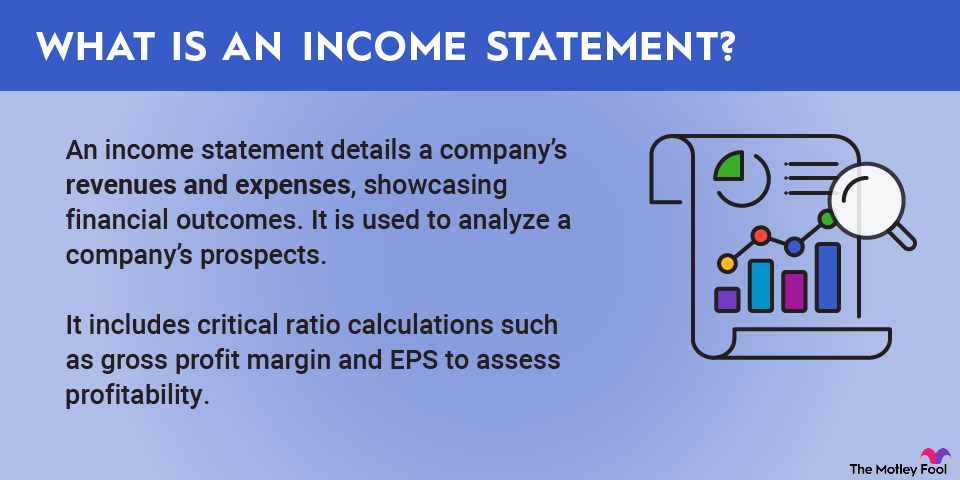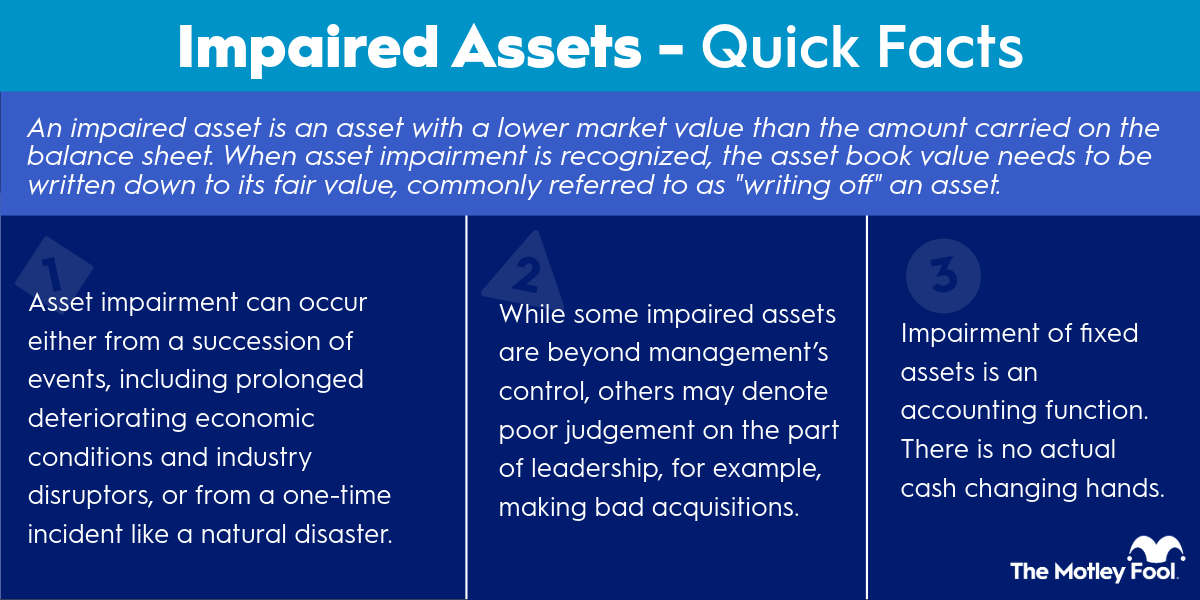Along with the balance sheet and cash flow statement, the income statement is one of the three most important financial documents that investors can use to analyze a company's prospects. An income statement simply displays the company’s revenues and expenses, providing investors with an array of information that can be used to gauge its value.

Elements of an income statement
The two basic elements of an income statement are revenue and expenses. Within those elements, however, can be multiple categories. Here are some terms to look for:
- Revenue: This should be the first section of the income statement. This amount is the total produced from the sale of goods or services. It can be broken down into operating (primary activity) and nonoperating (installation, operation, maintenance) revenue.
- Cost of goods sold: This is the cost a company has paid to produce the goods or services it sells.
- Gross profit: The net sales minus the cost of goods sold equals the gross profit.
- Gains: This can be a miscellaneous category used to record money from different activities, usually one-time events like the sale of a division or disposal of excess inventory.
- Expenses: This is generally the second section of an income statement and provides information about the money that a company spent to provide goods and services. Like revenue, expenses can be broken down into operating (core) and nonoperating (payrolls, sales commissions, and miscellaneous) expenses.
- Administrative expenses: These fixed expenses can include rent, salaries, travel, and other basic costs used to ensure that goods and services are produced.
- Depreciation: The costs of equipment generally are spread out over a period of years.
- Earnings before taxes (EBT): This is a simple calculation, income minus expenses.
- Net income: A bottom-line figure calculated by subtracting all expenses from total revenue.
Analyzing an income statement
Many investors use two methods to analyze income statements: horizontal analysis and vertical analysis.
Horizontal analysis essentially involves looking at figures in a financial statement over different time periods, such as quarters or years. It can yield useful information about trends over a period of months or years.
Vertical analysis involves comparing different items from a single income statement by calculating percentages instead of examining individual amounts. For example, a struggling company may have a very high percentage of its expenses dedicated to depreciation, indicating that it needs to update its equipment. Very high administrative expenses can also be a red flag in some cases.
Key metrics from an income statement
Typically, the most important formula to remember when looking at an income statement is the net income:
Net income = Revenue – Expenses
(Keep in mind that gains and losses should be considered as part of the net income equation.)
Another commonly used metric is gross profit margin. To calculate, you'll first need to know the gross profit:
Gross profit = Revenue – Cost of goods sold
You can calculate the gross profit margin by dividing the gross profit by revenue. This tells investors how much profit a business makes on each sale. For example, a company that has a gross profit of $10 million on revenues of $20 million would record a gross profit margin of 50%.
The operating margin tells investors how much a company makes after spending money on costs of production. The larger the operating margin, the more likely it is that the company is able to pay for fixed costs, including taxes and interest. It’s a good measure of a company’s efficiency.
Operating profit margin = (Revenue – Cost of goods sold – Operating expenses – Depreciation) / Revenue
Finally, earnings per share (EPS) is a figure that catches the attention of investors everywhere. It’s a basic indicator of a company’s financial health. A high EPS figure generally indicates a very profitable company. Calculating EPS is a simple exercise:
Earnings per share = Net profit / Outstanding shares
Related investing topics
Example of an income statement
Let’s look at basic information from the most recent quarterly statement for Apple (AAPL -0.93%). As you’ll see, Apple breaks out its revenues and expenses into products and services. It also (helpfully) provides gross margin and earnings per share. Apple’s financial statement is built more for a horizontal analysis that compares the fourth quarter of 2022 to the fourth quarter of 2021. It’s easy enough to convert the figures into percentages, though -- or to add data from previous quarters.
12/31/2022 | 12/25/2021 | ||||
Net sales | |||||
Products | $ 96,388 | $ 104,420 | |||
Services | $ 20,766 | $ 19,516 | |||
Total net sales | $ 117,154 | $ 123,936 | |||
Cost of sales | |||||
Products | $ 60,765 | $ 64,309 | |||
Services | $ 6,057 | $ 5,393 | |||
Total cost of sales | $ 66,822 | $ 69,702 | |||
Gross margin | $ 50,332 | $ 54,243 | |||
Operating expenses | |||||
R&D | $ 7,709 | $ 6,306 | |||
Selling, general & admin | $ 6,607 | $ 6,449 | |||
Total operating expenses | $ 14,316 | $ 12,755 | |||
Operating income | $ 36,016 | $ 41,488 | |||
Net income | $ (393) | $ (247) | |||
EBT | $ 35,623 | $ 41,241 | |||
Taxes | $ 5,625 | $ 6,611 | |||
Net income | $ 29,998 | $ 34,630 | |||
EPS | $ 1.89 | $ 2.11 |
Keep in mind that although an income statement contains a trove of valuable information for investors, it’s not the only game in town. Use income statements, along with balance sheets and cash flow statements, to compare your current or potential investments to similar companies, and always -- always -- remember that you should use the data to figure out what makes sense for you over the long term as a buy-and-hold investor.


















